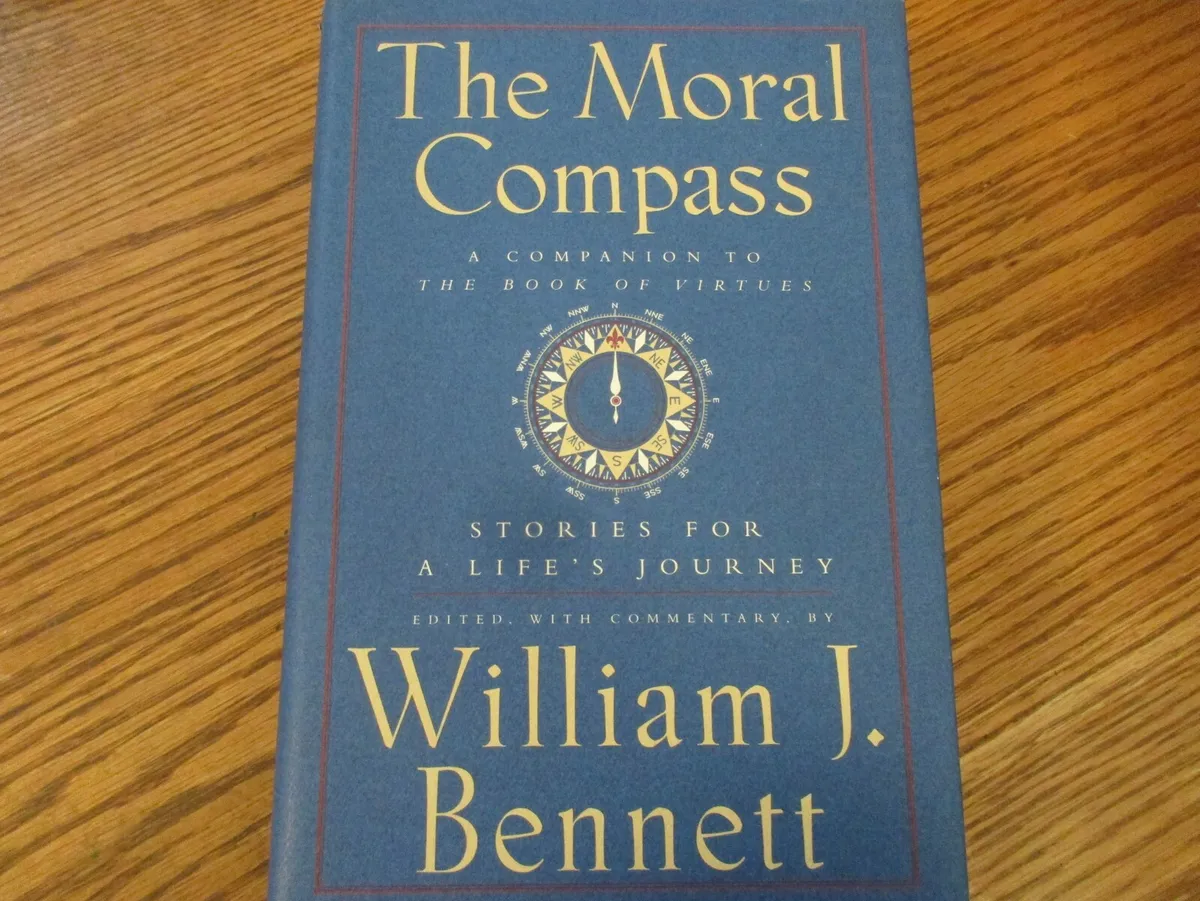
Moral Education and Story Telling
Another must read-volume by Bennett:
I am always interested in alerting people to good books. One way to do this is through book reviews, of which there are now 725 on this site. And these reviews are most often of new books that I want to let people know about. However, sometimes various older works that might be regarded as modern classics also deserve a mention.
This article is another case in point. A few weeks ago I wrote about a book that appeared three decades ago: The Book of Virtues by William Bennett (Simon and Schuster, 1993). A number of people favourable responded to that piece. It is found here: https://billmuehlenberg.com/2024/01/07/shaping-morality-through-story-telling/
In it I mentioned that Bennett had produced a companion volume two years later: The Moral Compass: Stories for a Life’s Journey (Simon & Schuster, 1995). In many ways it picks up on where the previous volume left off, and it very much follows the same format.
While it again covers the same key virtues (Responsibility, Courage, Perseverance, Honesty, Loyalty, Faith, and the like), it is arranged in terms of the stages of life, ranging from new life to old age. All up he has seven chapters dealing with these various stages.
The book again features hundreds of stories, poems and essays – some well-known, some not so much. It again features biblical and non-biblical material, Christian and non-Christian material. Again, each chapter is arranged from the easier to the harder material. And again, both children and parents will benefit greatly from all the great reading found therein.


One valuable aspect of the book – as with the previous volume – is not just the introduction to the book, but Bennett’s introduction to each chapter. In his general introduction he writes:
The basic assumption underlying this volume is that much of life is a moral and spiritual journey and that we undertake it, at least in large part, to find our way morally and spiritually. Thus it makes no sense to send young people forth on such an endeavor having offered them only some timid, vacillating opinions or options about conduct in the hope that in the course of their wanderings, they will stumble onto some more definite personal preferences which will become their “values.” We must give our children better equipment than that. We must raise them as moral and spiritual beings by offering them unequivocal, reliable standards of right and wrong, noble and base, just and unjust….
Of course, sound character education cannot come solely through hearing and reading stories, no matter how great they are. The training of the heart and the mind toward the good involves much more. (We would do well to remember that the Greek word charakter means “enduring marks,” traits that can be formed in a person by an almost infinite number of influences.) Moral education must involve following rules of good behavior. It must involve developing good habits, which come only through repeated practice. And character training must provide example by placing children in the company of responsible adults who show an allegiance to good character, who demonstrate the clear difference between right and wrong in their own everyday habits.
Nevertheless, the books and stories we share with our children can be important moral influences. They can be invaluable allies for parents and teachers; as President Charles W. Eliot of Harvard observed, “In the campaign for character, no auxiliaries are to be refused.” Literature can be a crucial part of a home, school, community, or culture’s ethos—another ancient Greek term meaning the distinguishing character or guiding beliefs, the habits of the denizens. As every parent and teacher knows, children love stories. Even in an age of computer games and electronic toys, there is still resonant power in the phrase “Once upon a time…” And so what we choose to read to our children matters a great deal. Legends, folktales, sacred stories, biographies, and poems can introduce the youngest children to the virtues; they can clarify notions of right and wrong for young people; and they can serve as powerful reminders of mankind’s best ideals all the way through adulthood. More than one great man or woman at a critical moment has recalled a simple fable, a familiar verse, a childhood hero.
In the intro to his first chapter, “Home and Hearth,” he says this in part:
All children need bread and shelter. But a true home, of course, is much more than that. Children also need love and order and, because they are not born knowing the difference between right and wrong, a place where they can begin to develop a moral sense. The transmission of virtues is one important reason for a home, and attention to the virtues is one of the important ties that bind a family together. “It is the peculiarity of man, in comparison with the rest of the animal world,” Aristotle wrote, “that he alone possesses a perception of good and evil, of the just and the unjust, and of other similar qualities; and it is association in these things which makes a family.”
And so home is the place where we receive our first instruction in the virtues. It is our first moral training ground, the place where we can come to know right from wrong through the nurturing and protective care of those who love us more than anyone else….
The chapter includes items such as the following: “Hush, Little Baby,” “The Three Billy Goats Gruff,” “The Legend of the Christ Child,” “Joseph and His Brothers,” “The Little Girl Who Dared,” The Drover’s Wife” by Henry Lawson, and “Prayer For Home and Family” by Robert Lewis Stevenson.
Let me highlight just one other section: “Mothers and Father, Husbands and Wives.” As to marriage, he says this in the introduction to this chapter:
There are many obligations in life, but none more important than the ones we accept when we become husbands and wives, mothers and fathers. In this chapter we find stories illustrating the virtues involved in those parts of life’s journey.
In recent history, marriage has devolved from being a sacrament to a contract to a convention to, finally, a convenience. (I am told there is a modern wedding vow that states not “as long as we both shall live,” but rather “as long as we both shall love.”) Of course, some marriages simply will not work. But the enormous number of separations and divorces today suggests that we no longer believe what we say during the ceremony: that marriage is a serious, lifelong commitment made “in the presence of God,” a commitment to give to each other as long as both shall live.
As Aristotle long ago pointed out, marriage is in fact a relationship based in no small part on virtues. The most basic of these is responsibility, for marriage is, after all, an arrangement held together by mutual dependence and reciprocal obligations. But successful marriages are about more than fulfilling the conditions of a contract. In good marriages, men and women seek to improve themselves for the sake of their loved one. They offer and draw moral strength, day in and day out, by sharing compassion, courage, self-discipline, and a host of other virtues. Thus the whole of the union becomes stronger and more wonderful than the sum of the parts. “What greater thing is there for human souls,” asked George Eliot, “than to feel that they are joined for life—to strengthen each other in all labor, to rest on each other in all pain, to be one with each other in silent, unspeakable memories at the moment of the last parting?” The stories in this chapter inspire us in all of these endeavors.
Selections featured here include: “The Owl and the Pussy Cat” by Edward Lear, “The Three Wishes,” “The Roses of Saint Elizabeth,” “An Excellent Wife” [Proverbs 31], “When Mother Reads Aloud,” “I Know of a Lovely Garden” by Martin Luther, “Monica, Mother of Augustine,” and “The Greatest of These is Love” [1 Corinthians 13].
If I may, let me share just one poem from this chapter: “The Baby” by George MacDonald:
Where did you come from, baby dear?
Out of the everywhere into here.
Where did you get those eyes so blue?
Out of the sky as I came through.
What makes the light in them sparkle and spin?
Some of the starry twinkles left in.
Where did you get that little tear?
I found it waiting when I got here.
What makes your forehead so smooth and high?
A soft hand stroked it as I went by.
What makes your cheek like a warm white rose?
I saw something better than any one knows.
Whence that three-cornered smile of bliss?
Three angels gave me at once a kiss.
Where did you get this pearly ear?
God spoke, and it came out to hear.
Where did you get those arms and hands?
Love made itself into bonds and bands.
Feet, whence did you come, you darling things?
From the same box as the cherubs’ wings.
How did they all just come to be you?
God thought about me, and so I grew.
But how did you come to us, you dear?
God thought about you, and so I am here.
If you loved The Book of Virtues, you will love The Moral Compass. If you have neither, it is not too late to remedy this major flaw. As you buy for yourself these two volumes, you can always get a second set and give them to someone you love and care for. Thanks again Bill Bennett.
[1594 words]
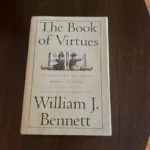




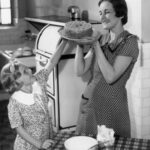

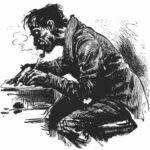



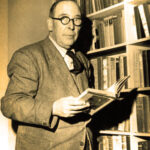



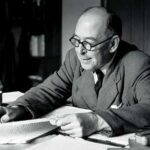




I’ve stockpiled these in case my granddaughter meets someone in the future, given she loved me reading to her from the Book of Virtues so much as a little girl. Although, as with the trusty Book of Virtues, I’ve already worn out two copies already. Incidentally, that baby rhyme has always been her favourite!
Thanks Bill, Looks like I better go to the bookstore again only I might keep the Moral Compass and give the Book of Virtues to my daughter and her 3 yr old.